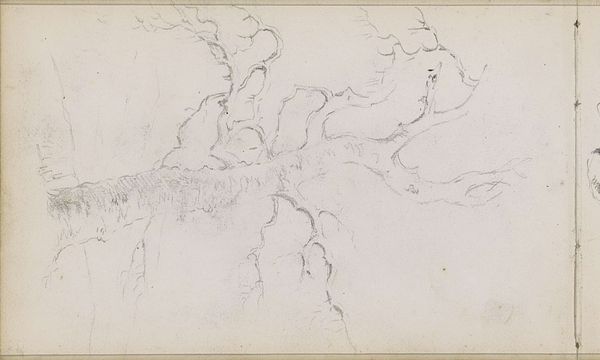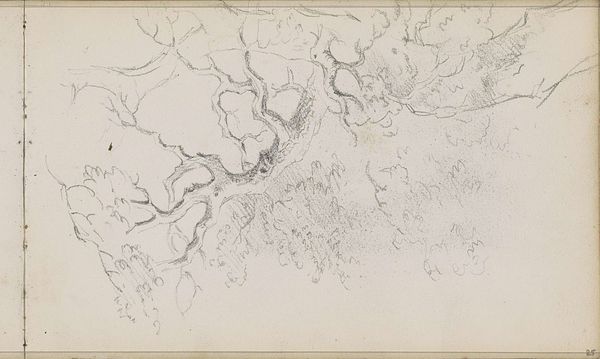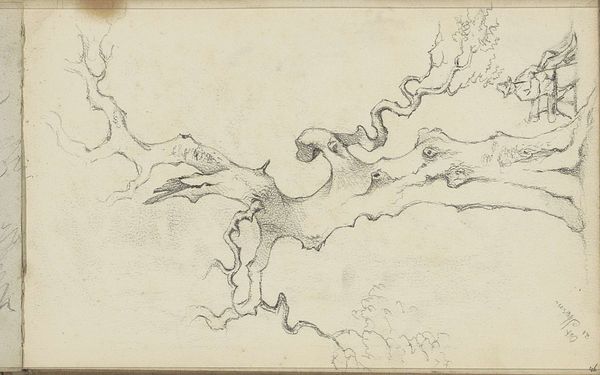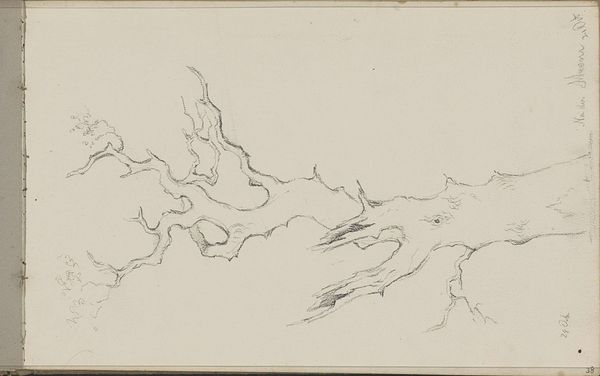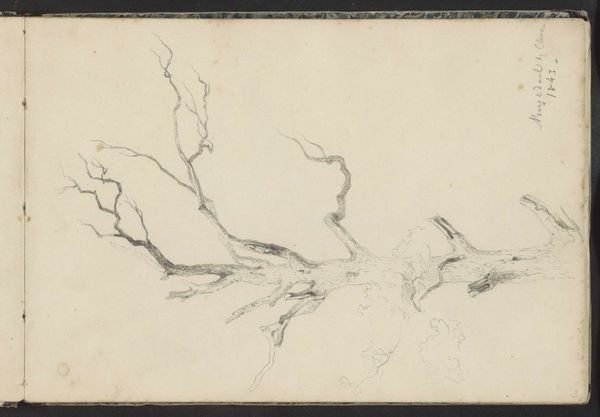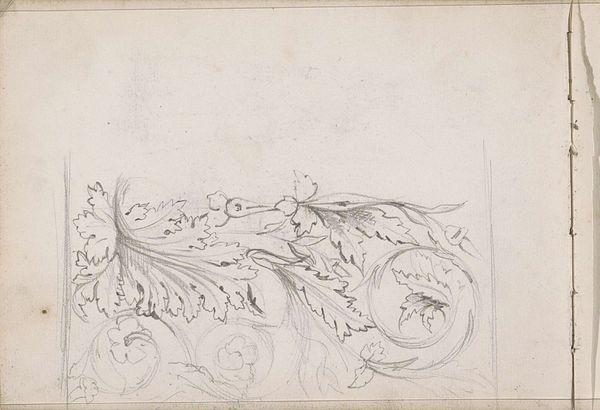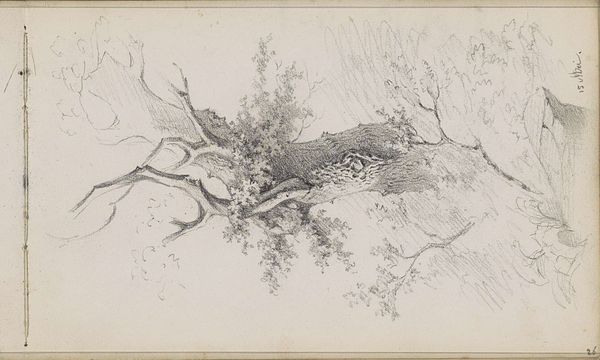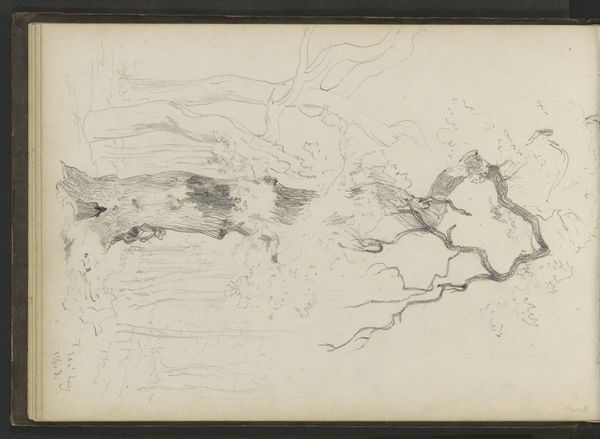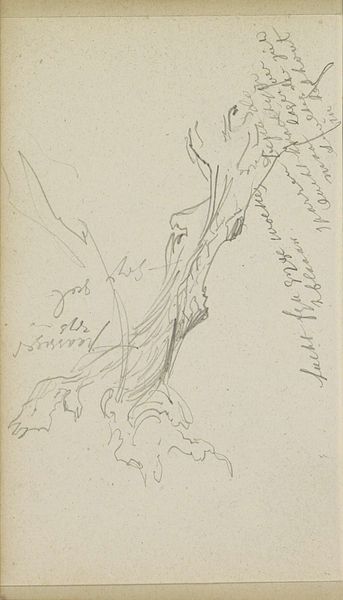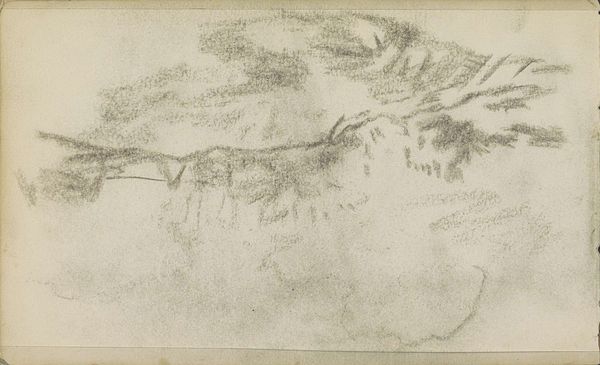
drawing, paper, pencil
#
drawing
#
pencil sketch
#
landscape
#
paper
#
form
#
pencil
#
line
#
realism
Dimensions: height 184 mm, width 282 mm
Copyright: Rijks Museum: Open Domain
Curator: This drawing, "Vrouw bij een boom," created by Willem Cornelis Rip in 1874, uses pencil on paper. It's interesting to consider this delicate pencil work within the context of late 19th-century art production. What is your immediate impression? Editor: I'm struck by its incompleteness, or perhaps "fragility" is the better word. The lightness of the pencil sketch creates a tentative, ephemeral feel. There’s an almost dreamlike quality in its delicate rendering. Curator: Indeed. Look at the laid paper itself. Rip is revealing an almost untouched material substrate that subtly elevates the tree trunk form, and highlights a landscape in a rather unconventional form. Think about the role paper production played in visualizing the Dutch landscape at the time; paper mills, forestry, trade networks—it's all connected to what we're seeing. Editor: That makes me look at the line work differently. The stark contrast of white space surrounding the sketched tree emphasizes the stark reality against its emptiness. There are also so many intersecting and chaotic lines of various thickness which create an illusion of form. What do you make of that conscious compositional choice? Curator: It draws our attention back to the meticulous labor involved in its creation. Notice the varying pressure of the pencil, the intentional layering of lines to build texture. The final image represents not only an image of nature but it shows the working hand. Furthermore, considering the gendered dimensions—a “vrouw” or “woman” in the work’s title, combined with this labor–invites speculation about representation, production and cultural place. Editor: But what's the purpose of this particular rendering, absent human form? I get that we are looking at an industrial-age depiction, but how does this tree drawing push any boundaries, especially when we lack the titular "woman" present? Curator: Precisely. That’s what compels me to reconsider its place within Rip’s career. Perhaps it marks a pivotal transition in his visualization. Considering that he did primarily landscape work that showed the landscape and rural Dutch settings that existed, and comparing that work to this... Editor: So, considering both formal and material elements, it suggests a transition in Rip’s trajectory of image production during this period. Fascinating.
Comments
No comments
Be the first to comment and join the conversation on the ultimate creative platform.
